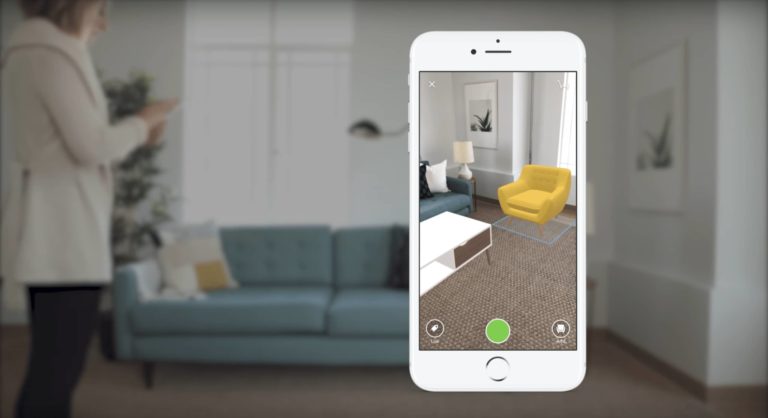
Shoppability is the new black. There’s a trend towards all things being shoppable. We’re talking buy buttons on everything from YouTube videos to Instagram Stories. This isn’t new but is one of many trends that’s been Covid-accelerated as it piggybacks on eCommerce inflections.
Elsewhere – and for similar reasons – we see a separate trend: AR shopping, also known as “camera commerce.” This involves 3D product visualization to virtually try on everything from cosmetics to couches. It also includes visual search to identify and buy physical objects.
Panning back, these two trends – shoppability and camera commerce – are on a collision course. Point your phone at a jacket a friend is wearing using Snap Scan, then buy it right on the spot. This process compresses the purchase funnel through a visually-informed shopping flow.
This is the topic of a recent report from our research arm, ARtillery Intelligence. Entitled The Immersive Commerce Era: AR & Shopping Collide, it breaks down opportunities and happenings at the intersection of social commerce and AR. We’ve excerpted it below.
Bright Spots
One of AR’s bright spots is its ability to boost sales by demonstrating products with greater dimension. Product attributes can be exposed more effectively through 3D and AR interfaces than traditional 2D images in eCommerce. This engenders a more informed shopper.
This trend has gone into hyperdrive over the past two years as eCommerce has inflected due to retail lockdowns. AR has become more valuable under these circumstances as it can bring back the real-life dimension and product interactivity that’s been yanked away from consumers.
Of course, all the above speaks on conceptual levels in terms of AR’s value. The real proof is in the figures and performance data. Does AR actually create more immersive product experiences — in Covid and non-Covid scenarios — and does that translate to the bottom line?
Here are a series of data points we’ve assembled to answer these questions:
— Shopify reports that products with 3D and AR visualization features achieved 94 percent greater conversions on average than non-AR benchmarks.
— Shopify separately reports that some products at the highest end of the performance spectrum can achieve 250 percent conversion boosts.
— Home Depot reports that its AR product visualization feature boosts conversions 2x-3x over eCommerce benchmarks.
— Seek reports that the company’s work with Overstock.com resulted in conversion increases from 10-200 percent.
— NexTech AR Solutions reports that its campaign for Miele Vacuum saw a conversion boost of 300 percent over non-AR equivalents.
— Gunner Kennels has achieved a 40 percent lift in conversions using AR visualization.
— Herschel Supply Co reports that its AR furniture visualization feature led to a 152 percent increase in revenue per visit.
— 3D and AR design platform Vectary announced that it has seen a 300 percent increase in AR product views since the beginning of the pandemic.
You may notice that the terms “3D and AR” are used above. For those unfamiliar, 3D product visualization involves models you can spin. AR has the additional distinction of activating your camera to place the model in your space. Google Swirl is a good example of both.
We’ll pause there and circle back in the next installment with more trend analyses around the collision of AR and social commerce. Meanwhile, see the full report here.

